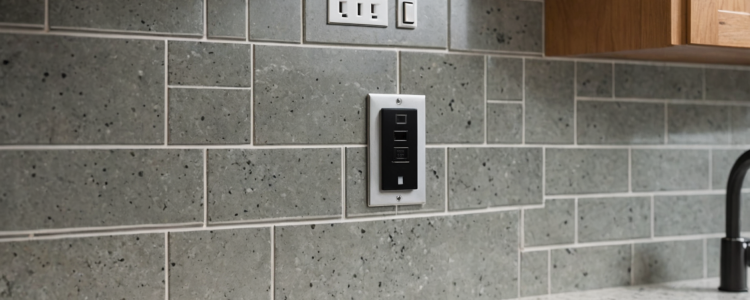You may have heard about GFCI outlets and wondered why they’re essential. GFCI, or Ground Fault Circuit Interrupter, outlets are designed to keep us safe from electric shocks by detecting slight imbalances in electrical currents and instantly shutting off power. While they’re a requirement in bathrooms and kitchens, where water contact is likely, GFCI installation is a good idea in any area of the home, indoors or outdoors, where safety is a top priority.
Why GFCI Outlets Are Different
Traditional outlets deliver power to devices, but GFCI outlets do more than that. They have sensors built in to monitor the flow of electricity. If they detect a sudden change—say, from contact with water or a short circuit—they’ll shut down in milliseconds. This can prevent electrical shocks, injuries, and even fires.
Imagine you’re using a hairdryer near a sink. If water splashes and makes contact with the device, a regular outlet might not react quickly enough, increasing the chance of an electric shock. GFCI outlets, on the other hand, immediately interrupt the flow, providing critical protection.
The Process of GFCI Installation
Installing a GFCI outlet isn’t just about swapping out one outlet for another. Here’s how the process works:
- Turn Off Power: First and foremost, the power to the outlet must be shut off at the breaker to prevent any risk of electric shock.
- Testing for Power: Using a tester, the electrician will double-check that the outlet is completely de-energized. Safety always comes first.
- Wiring the GFCI Outlet: GFCI outlets have a specific setup compared to traditional outlets. Electricians carefully connect the wires to ensure they function correctly. Most GFCI outlets have line and load terminals that must be wired correctly to provide full protection.
- Testing the Installation: After installation, the electrician will test the GFCI outlet using its built-in «Test» and «Reset» buttons to make sure it’s working properly. Testing guarantees that it will trip if any electrical fault is detected.
- Explaining Usage: Finally, the electrician will show you how to use and test the GFCI outlet periodically, so you know it’s always working.
Common Areas for GFCI Installation
Building codes require GFCI outlets in specific places, and for good reason. Here’s where GFCI outlets are most useful:
- Bathrooms: With sinks, showers, and bathtubs nearby, bathrooms are at high risk for electric shock.
- Kitchens: Anywhere near sinks, countertops, or appliances, GFCI outlets can add safety.
- Garages: Many people use power tools and extension cords in the garage. A GFCI outlet ensures these spaces are safer, especially if your garage is exposed to moisture.
- Basements and Laundry Rooms: Anywhere with utility sinks or potential for dampness should have GFCI protection.
- Outdoor Areas: Exterior outlets are exposed to all types of weather, making GFCI a smart and essential choice.
DIY vs. Professional GFCI Installation
While GFCI installation might look straightforward, hiring a licensed electrician is always recommended. Electricians understand how to handle wiring, test the outlet, and ensure everything meets safety codes. Even a small mistake during installation can leave your home vulnerable to electrical hazards, so it’s wise to rely on a professional.
Testing and Maintaining Your GFCI Outlets
Once installed, GFCI outlets aren’t “set it and forget it” devices. They should be tested monthly using the “Test” and “Reset” buttons. Pressing “Test” should cause the outlet to cut power, and pressing “Reset” should restore it. If it doesn’t respond, it might be time for a replacement or a quick inspection from an electrician.
The Benefits of GFCI Installation
Installing GFCI outlets is an investment in safety and peace of mind. Here are just a few benefits:
- Enhanced Safety: GFCI outlets are designed to protect you from electrical shocks and potential fires, making them a must-have for any space where water and electricity are close.
- Compliance with Codes: Many building codes require GFCI outlets in specific areas. Installing them ensures your home meets these requirements, which is especially important if you plan to sell or rent your property.
- Increased Home Value: A home with up-to-date electrical features, including GFCI outlets, is more appealing to buyers and renters, as it shows you’ve invested in safety.
Final Thoughts on GFCI Installation
GFCI installation is a simple upgrade that delivers significant safety benefits. Whether you’re remodeling or just want to improve your home’s electrical safety, installing GFCI outlets is a straightforward step that makes a big difference. With protection from shocks and compliance with safety codes, GFCI outlets are a practical and valuable addition to any home.
So, if you’re ready to increase safety in your home, consider GFCI installation as an essential step. A licensed electrician can help you identify the best locations, install the outlets correctly, and make sure they’re operating at peak performance. A small investment today can provide lasting peace of mind for you and your family.






